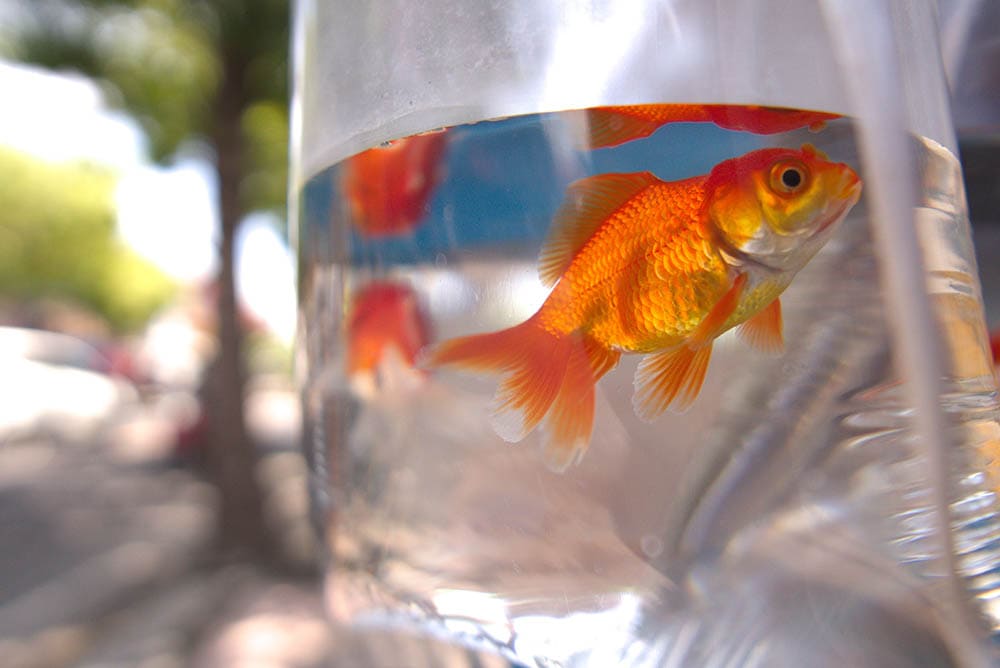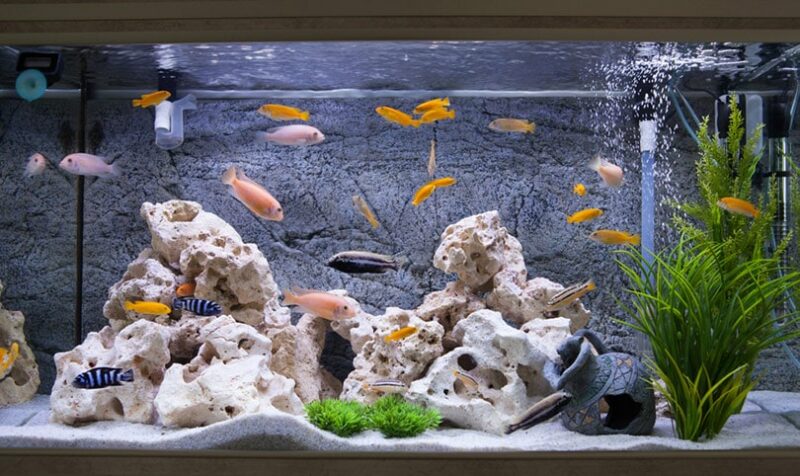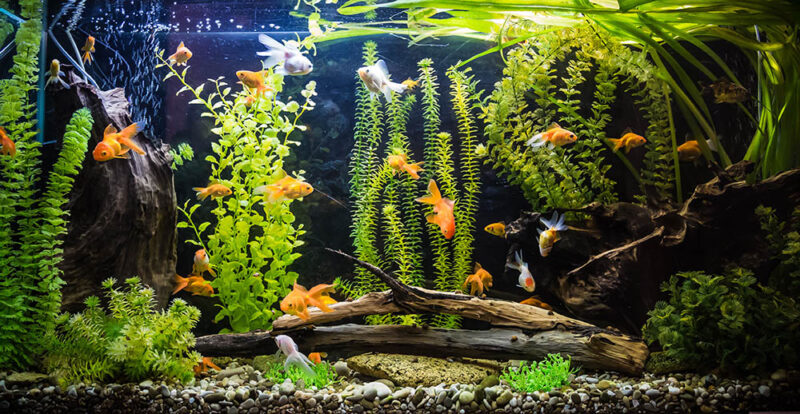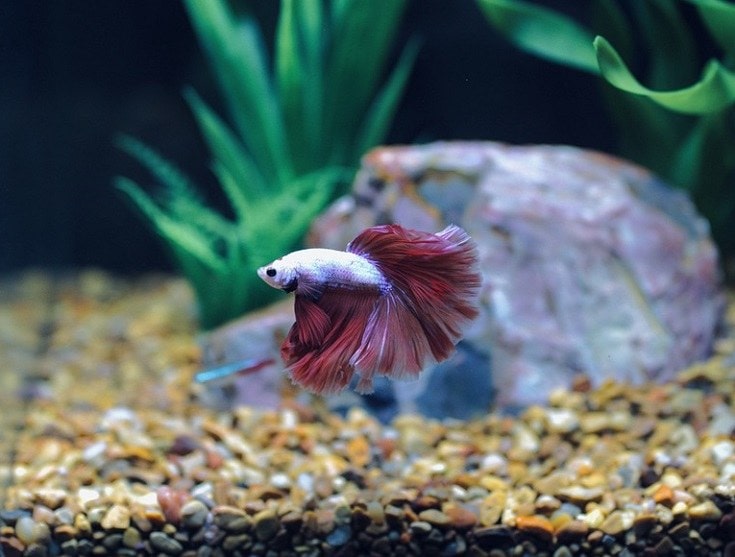
Most aquarists strive to have a clear and clean aquarium to improve the appearance of their aquarium. Achieving an aquarium with crystal clear water requires a lot of maintenance and patience. By understanding the main cause behind your aquarium’s unclear water, you will be able to use methods to help combat the issue and keep the water from becoming murky.
We understand the frustration many aquarists face when trying to get their aquarium water to stay clear, which is why we have created this helpful guide to give you steps and tips to keep your aquarium water looking clear and create a better environment for your aquarium inhabitants.
What Causes Murky Aquarium Water?

The 6 Tips & Tricks for Crystal Clear Aquarium Water
1. Choose The Correct Filtration
The most important factor to consider when trying to clear up your aquarium’s water is to choose the right type of filtration. There are various filters on the market that serve different purposes in your aquarium. The size and type of filter will depend on the number of fish and invertebrates you have in your aquarium and the amount of bioload these inhabitants produce.
If you want a clear aquarium, then running a filter that has two or all three of these filtration methods would be ideal. Chemical filter media is especially great for helping keep your aquarium’s water clean by removing discoloration and odors that are too small to be caught in filters that only remove large particles in the water.
2. Use Water Treatments or Clarifiers
There are plenty of water treatments that can be used in the aquarium to combat algae issues that cause discoloration in an aquarium and even ones that help reduce the murkiness of the water. These are mainly called ‘clarifiers’ and they work by removing the small bacteria particles in the water by turning them into bigger particles that can then easily be removed by your aquarium’s filtration system.
3. Keep The Aquarium Cycled
When most aquarists set up a new aquarium, it will usually be cloudy for up to a month due to all the beneficial bacteria trying to establish themselves in the aquarium. The water test readings will give you an indication of high ammonia and nitrite, but little-to-no indication of nitrates.
When an aquarium is first going through the nitrogen cycle (the establishment of beneficial bacteria), it should be left alone until the water test kit readings show 0ppm ammonia and nitrite, and up to 20ppm nitrate. Once the cloudiness has settled, it will then be safe to add live inhabitants to your aquarium.
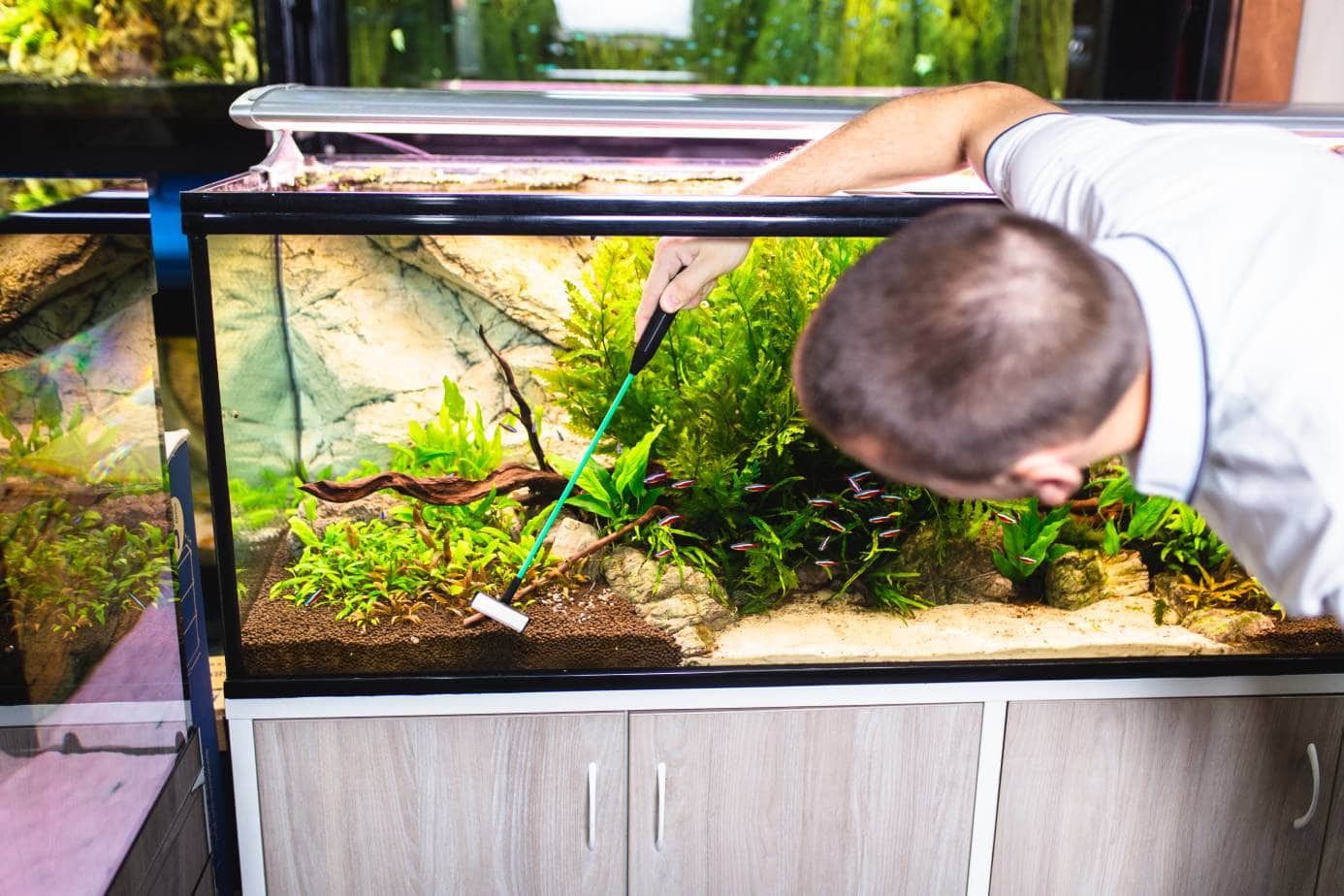
4. Frequent Water Changes
Water changes are a simple and effective way to remove large particles and debris that can get trapped in the aquarium’s substrate and cloud the water when it gets stirred up. You can use an aquarium siphon to suck up the inhabitant’s poop and any leftover food that would start to rot and become mush in the substrate. Water changes are also a great way to help reduce water discoloration by replenishing the aquarium with fresh and clear water.
5. Conduct Regular Maintenance
Looking after an aquarium means that you must regularly clean it and keep up. The filter, glass and any ornaments that have gathered dirt or algae will need to be cleaned. By regularly removing dirt and waste in the aquarium, you will help prevent it from worsening your aquarium’s water clarity issues.
All types of filters will need to be cleaned under old aquarium water in a bucket to remove the gunk that builds up inside and prevents the filter from working properly. If you have a filter that requires filter media, it should be changed at least once a month to ensure that it is kept fresh.
You can also use a scrubbing brush or aquarium algae scraper to remove any algae that are growing on your aquarium’s glass and other surfaces which can cause the water to look discolored.
6. Keep Nitrate and Phosphate Levels Down
When waste in an aquarium is not broken down properly, it can cause the phosphate levels to rise in your aquarium and build up. Nitrates become an issue when the water has not been changed in a while or if you have no live plants absorbing excess nitrates.
This can cause the aquarium water to have a slightly milky appearance and the excess phosphate and nitrates can also cause algae to grow because it will thrive off the nutrients that nitrates provide. Water changes and live plants are great at helping to lower these chemicals and keeping the water chemistry good.
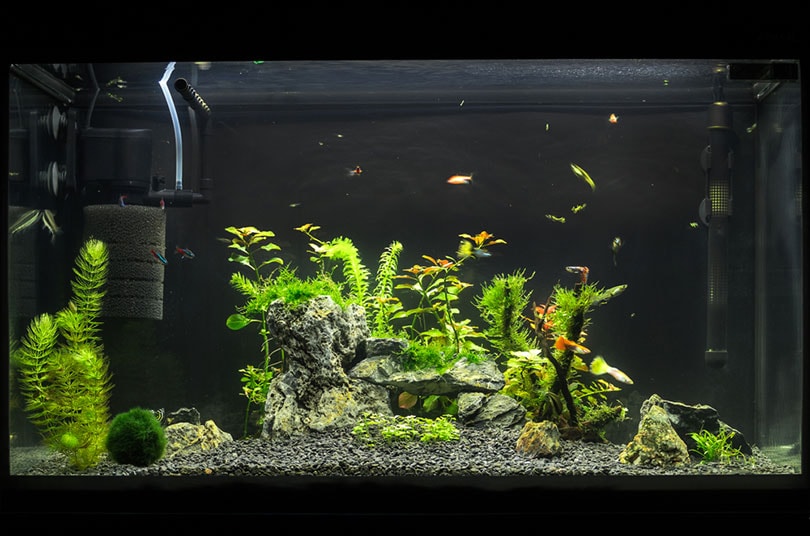
Final Thoughts
It can be tricky at first to find the right balance in your aquarium to fully achieve a crystal-clear aquarium. If you follow a good aquarium maintenance schedule, have a good filtration system, and use water treatments for clearer water when necessary, you should be able to maintain the look of a crystal-clear aquarium. This will allow you to enjoy the overall appearance of your aquarium and any inhabitants without the disturbance of murky or discolored water.
Featured Image Credit: Frantisek Czanner, Shutterstock



